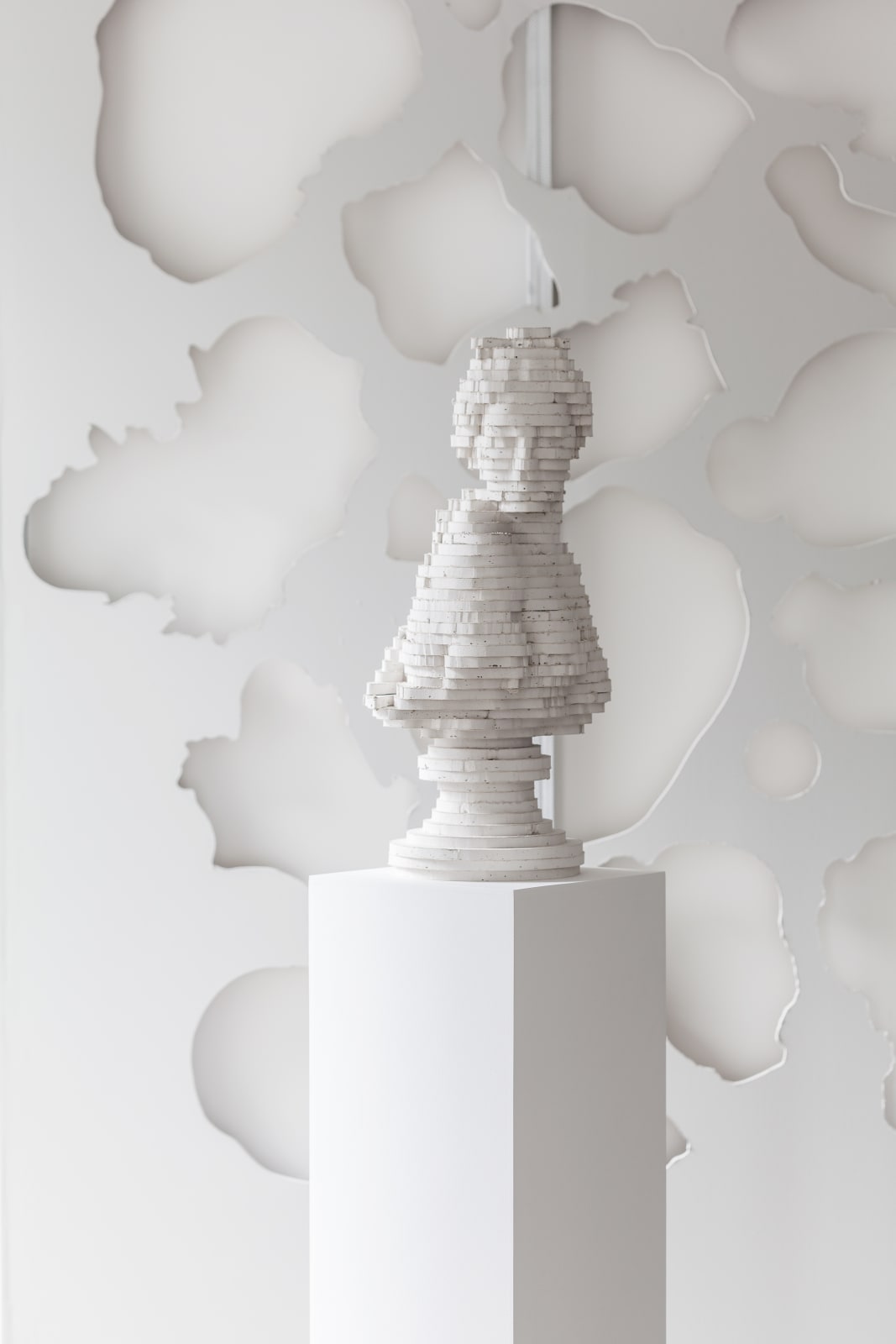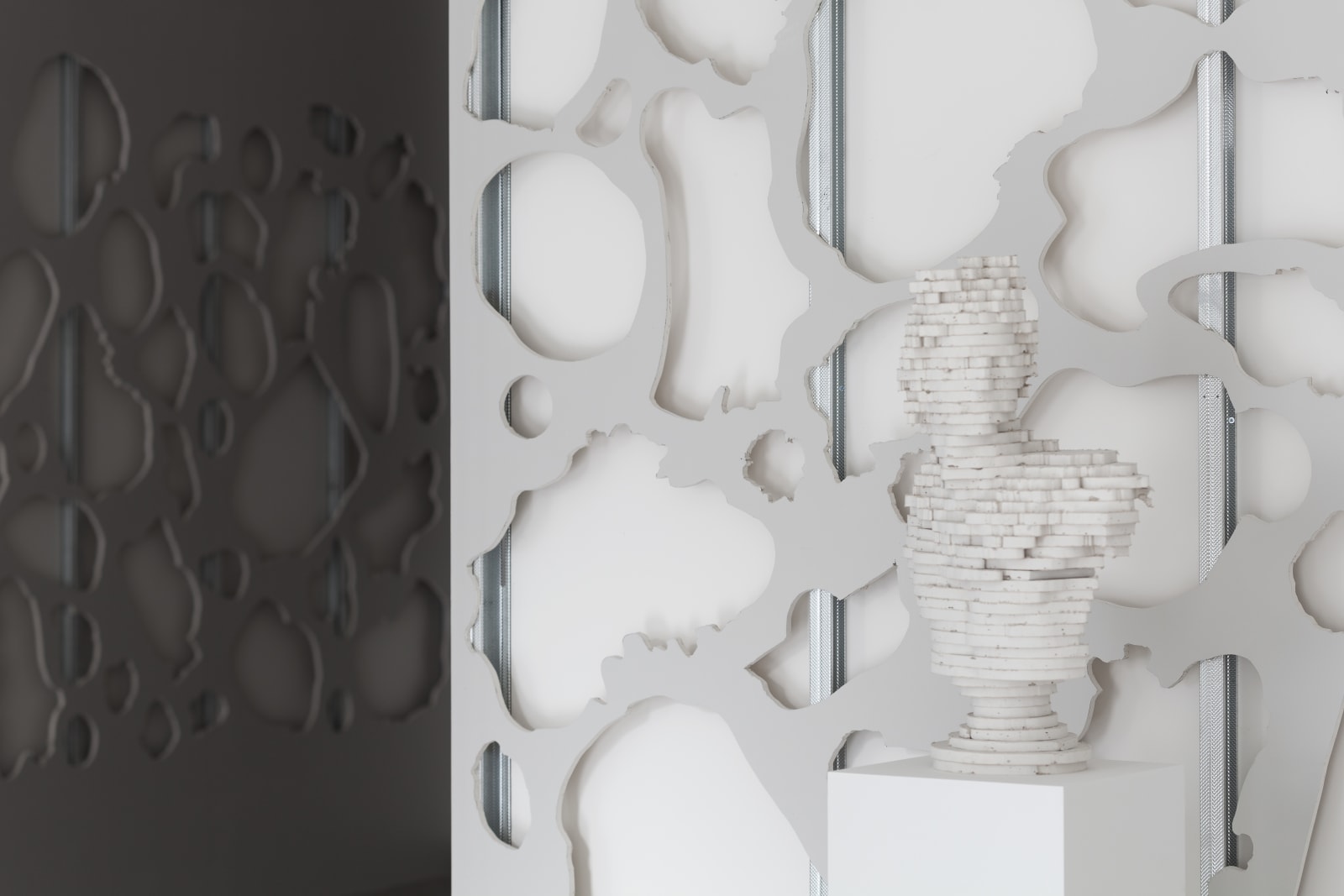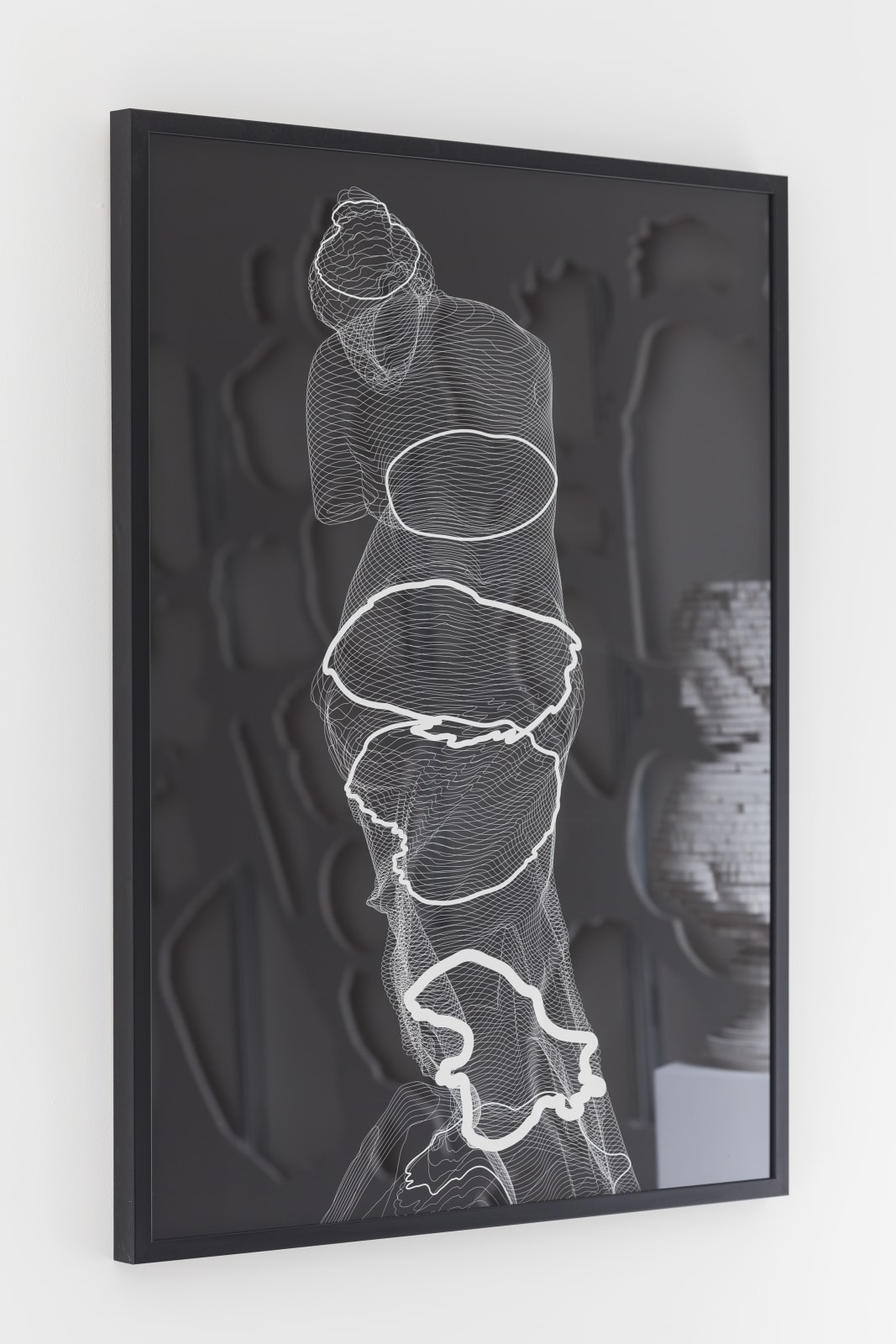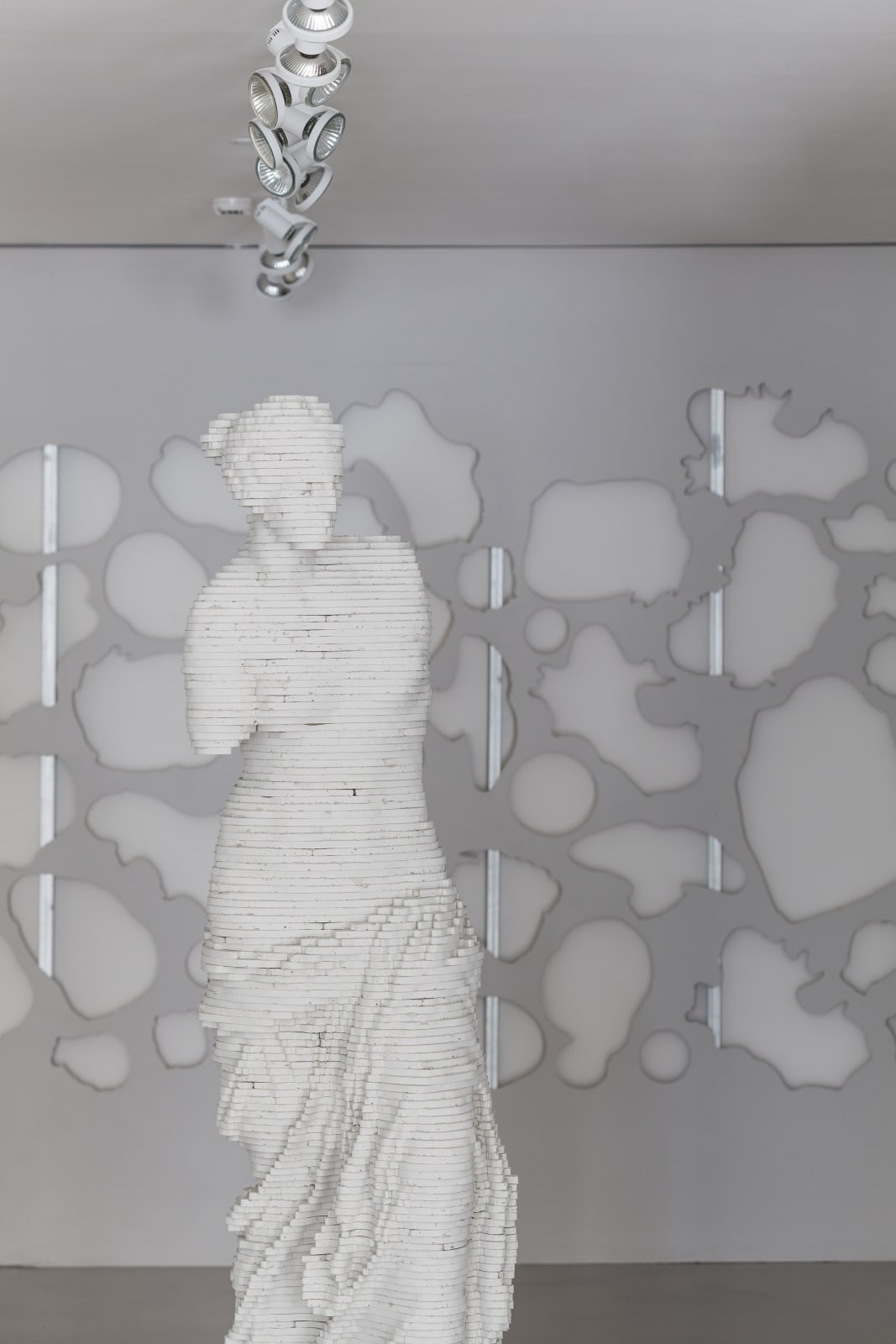SCOTT CARTER: THE SHAPE OF THINGS
BEERS London is proud to present The Shape of Things, the first UK solo exhibition by American artist Scott Carter including brand new sculptural works and unique installations.
Carter has engaged in two week specific ‘residency’ on-site at BEERS London transforming the gallery space in the days prior to the opening of the exhibition, creating an immersive installation that includes numerous sculptural and two-dimensional pieces using only the materials that are encompassed within – and sourced from – the gallery infrastructure itself.
Carter’s artistic practice encompasses a wide artistic discourse, including art, design, architecture, and even sound, but always relate to the nature of space and its relationship to the individual. Deriving from a tactile sense for materials, Carter’s process is undoubtedly unique: upon entering the exhibition space, his response is both performative and sculptural. From the raw materials by which he is surrounded, transforms the concept of space and architecture, literally excavating sections of the wall, (or even flooring) and reconstructing new artworks from those raw materials. With such a dependency on materiality, Carter’s work remains whimsical, referential, and personal, managing to transcend their base materiality, as his source materials (at once reduced to their origins) are elevated and imbued with newness of form and function.
Through the process of examining materials, Carter analyses his, and our, own placement in time and space. Inevitably, this process calls attention to human fallibility, our alienation from the natural world, meditation, and spiritualism as one attempts to assert alternate meaning in the built environment. Through Carter’s actions, subtle idiosyncrasies reveal themselves, coinciding with the physicality of domestic life, ideas of the museum space, and aims to categorize the limitlessness of imagination. These interventions, ultimately, amount to concise, playful and creative critiques of the way we experience space and the belongings, memories, and items that inhabit our world and define us as humans.
Jorge Castellanos | Michael Fanta | Kate Lyddon | Pawel Sliwinski
In any depiction of reality, one must consider the areas of representation that exist on the outskirts of truth, where veracity is replaced by imagination and the subconscious. In this exhibition, artists Jorge Castellanos, Michael Fanta, Kate Lyddon, and Pawel Sliwinski demonstrate a prevailing desire to reconcile the real with the unreal, and the conscious with the subconscious. Each of the four artists has devised a cast of characters who represent the proverbial outsider, isolated as a result of their own foolishness, made tragic through the possession of some elusive knowledge, or abandoned through some grotesque realization. These images and objects transcend metaphor: they provide us with a subversively realized document of that which remains unseen, yet lurks ever present beneath the surface of reality, maintaining both symbolic and psychological significance within their selected media.
In the paintings of Pawel Sliwinski, bizarre figures drift through a backdrop of emotive colours and vaguely disconcerting abstracted landscapes, occupying a space outside of certainty. Despite their colorful, often cartoonish appearance, they embody a psychological immediacy that cannot be understated. In Bums, we are subjected to a vibrant and distressing scene of social disintegration. As the characters in Sliwinski’s painted worlds collapse in upon themselves, we are left with the sense that these paintings offer more than they at first present; they are perhaps Sliwinski’s critical perspective of society: a mirror into revealing truth of the human condition. Similar in psychological impact is the work of Michael Fanta, in which a recurring (and increasingly forlorn) floating head becomes a metaphor for internalized fears and phobias. Is this figure hiding, or hesitantly presenting itself to us? Minimal and unpretentious in content, Fanta’s paintings are nonetheless fraught with social and psychological implications. The half-concealed figure, immersed in an unending sea, takes on the role of an everyman. Peering out from the surface of the water, this figure fails to act: indelibly isolated and immobile upon himself.
The notion of immobility and internalization is also present within the visceral paintings of Jorge Castellanos. His misshapen, inverted human forms are depicted with a physicality verging on the grotesque. Yet even as they emphasize viscera and organs, they avoid classification as merely anatomical, culling from a history of Mexican retrato paintings that focus on death and transcendence. Drawing both indignation and inspiration from the violence found all too frequently in his home country, and in the world at large, Castellanos’ writhing figures are a simultaneous ode to resilience and futility. Even as they reference a physical injury of the body, they create an equally powerful commentary on wounds that are far more psychosomatic in nature.
A correlation may be drawn to the work of Kate Lyddon, whose sculptural figurehead draws on the historic tradition of the grotesque, while simultaneously surpassing this precedent in favour of a highly contemporary perspective. Lyddon’s Lunatic sits proudly as a proclamation of the malleability of the human body and mind. Its severely malformed features transport the viewer into an alternate reality in which dark humour prevails, and the verisimilitude of representation is in a constant state of flux.
SCOTT CARTER
Scott Carter (b.1984, USA) is influenced by the experience of living amongst mass produced materials, spaces and objects that are inherent in contemporary architecture and design. His work manifests as immersive installations and interactive objects that facilitate subtle shifts in value and attempt to redefine utility in relation to everyday experiences. His practice parallels contemporary discourse in art, design, architecture and sound.In short, Carter’s methods are both performative and sculptural: he reshapes the contemporary gallery space by literally excavating sections of the gallery drywall (or floor) and reconstructing a new sculpture or installation from those pieces. He lives and works in Chicago, where he received an MFA in Sculpture from the School of the Art Institute of Chicago in 2011.









